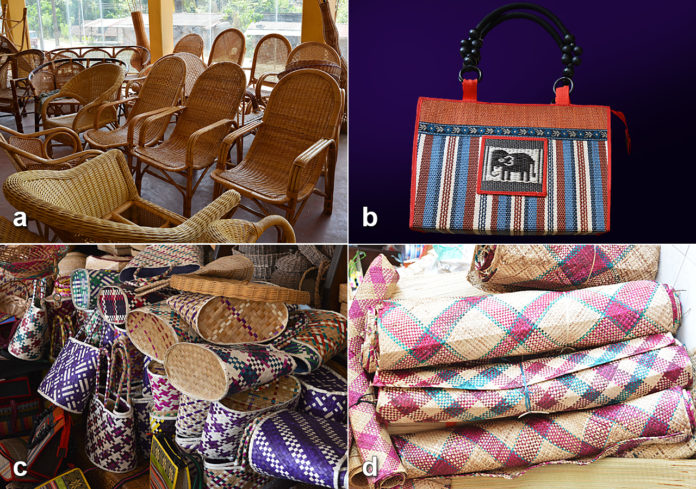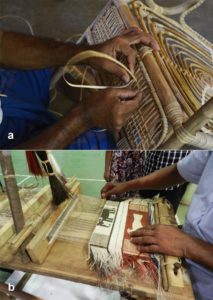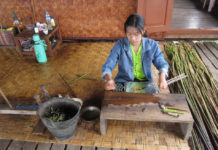
Bamboo, rattan, rush, leaves of palms and pandanus, and plant fibers are used to make a variety of utility and ornamental items by Sri Lankan craftsmen.
Bamboos of large size are carved or painted to make ornamental items. Bata, a small variety of bamboo, is used to make baskets. The crafts are mostly practiced in the central, south, and western parts of the country. Rattan is used to make fashion furniture, baskets, and ornamental products. Several varieties of rush are used to weave mats, bags, trays, purses, folders, and so on, with intricate decorations.
 Weaving of floor-carpets using galläha rush is a recent development. Tender leaves of wetakeiya (pandamus kaida), palmyrah (borassus flabellifer), coconut leaves, and indikola (wild date palm, phoenix reclinata) are used to weave baskets, boxes, trays, and coin purses, etc. Fibres of Niyanda (bowstring hemp, sansevieria zeylanica) are used in the Dumbara area to weave mats with traditional intricate designs and to make fly-whisks, wall-hangings, cushion-covers, beach-bags, table-mats and other ornamental items.
Weaving of floor-carpets using galläha rush is a recent development. Tender leaves of wetakeiya (pandamus kaida), palmyrah (borassus flabellifer), coconut leaves, and indikola (wild date palm, phoenix reclinata) are used to weave baskets, boxes, trays, and coin purses, etc. Fibres of Niyanda (bowstring hemp, sansevieria zeylanica) are used in the Dumbara area to weave mats with traditional intricate designs and to make fly-whisks, wall-hangings, cushion-covers, beach-bags, table-mats and other ornamental items.
Bamboo strands are treated against insect attacks. Rattan is sun-dried, splinted, and soaked in hot water for softening. Basket weavers use simple techniques and patterns. Rush are dried, flattened by pressing between a finger and a small rush-knife, and dyed. Niyanda leaves are scraped to separate the fibre from the fleshy material, dyed, and dried to weave on a simple loom. Leaf materials are cut, dyed with bright colours, and cut into thin strips for weaving.
Currently, craftspersons are experimenting with fibre from the banana tree and Nawa tree (sterculia balanghas) to weave mats, table mats, hats, purses etc. Similar crafts are found in the South and South-east Asian region. Some of the designs are unique to Sri Lanka. Crafts are located in areas where the plants for raw materials grow. Noticeable regional variations are absent. The government assistance is in place through several national institutions such as the Industrial Development Board, National Crafts Council, National Design Centre and Palmyra Development Board to sustain the crafts.




